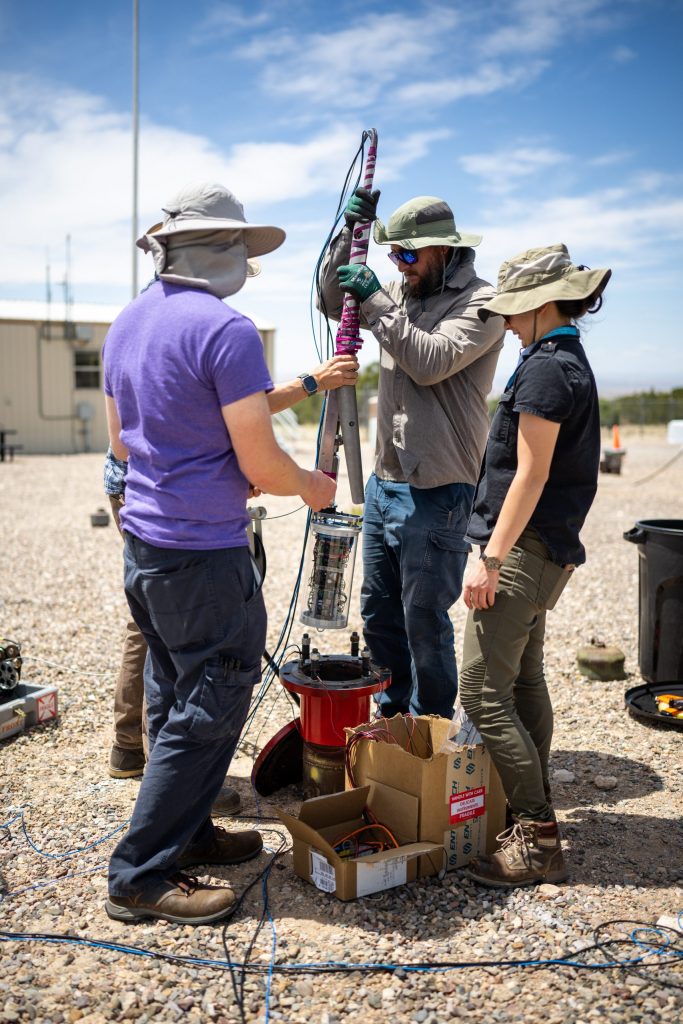
What is geothermal energy?
Geothermal energy is an abundant energy resource and refers to energy generated by extracting natural heat from rock deep beneath the Earth’s surface. Geothermal energy can be used to generate electricity, heat buildings, and drive industrial processes while emitting few to zero greenhouse gases. It is a domestic, renewable energy source with extraordinary potential. With advances in technology, the Department of Energy estimates that geothermal energy capacity in the United States could power more than 40 million U.S. homes by 2050.
Sandia’s Geothermal Research Program
Sandia’s Geothermal Research Program has been at the forefront of innovation and R&D for the past four decades. It applies electrical and mechanical engineering, geothermal energy systems knowledge, and laboratory and field testing to develop downhole tools to access deep, hot, and chemically harsh subsurface environments for geothermal energy production, oil and gas extraction, environmental restoration, mine rescue, energy storage, and national security.
Developing Geothermal Technologies

Geothermal-related research studies practical solutions to the challenges associated with tapping the intense sources of heat found well below the Earth’s surface in severe environments. Sandia’s geothermal research in subsurface access, monitoring, and reservoir modification aims to develop enabling technologies and reduce the cost and risk associated with drilling, stimulating, and characterizing harsh, subterranean environments. Historically and into the present, Sandia’s geothermal research has focused on enabling the nation’s use of geothermal energy.
A large portion of the cost and risk of generating electricity from geothermal sources is associated with the drilling and completion of wells. Because of this, Sandia’s Geothermal Research Program has primarily focused on developing improved drilling and completion technologies, such as diagnostics-while-drilling, high-temperature subsurface characterization instrumentation, advanced drill bits, and wellbore integrity technologies to reduce and mitigate problems associated with loss of circulation.
The program also studies advanced drilling concepts to provide economical access to deeper and hotter resources in the future. Most of this research is cooperatively conducted with geothermal operators and companies within the well service industry. On a cost-per-foot basis, geothermal drilling is among the most expensive type of drilling performed; Sandia’s work in this area has natural synergies that benefit other industries and agencies requiring drilled access to the underground.
Work with Us
We partner with large and small businesses, universities, and government agencies. With multiple agreement types to select from, partners can access world-class science, engineering, experts, and infrastructure.
Contact
Giorgia Bettin
(505) 844-9315
gbettin@sandia.gov